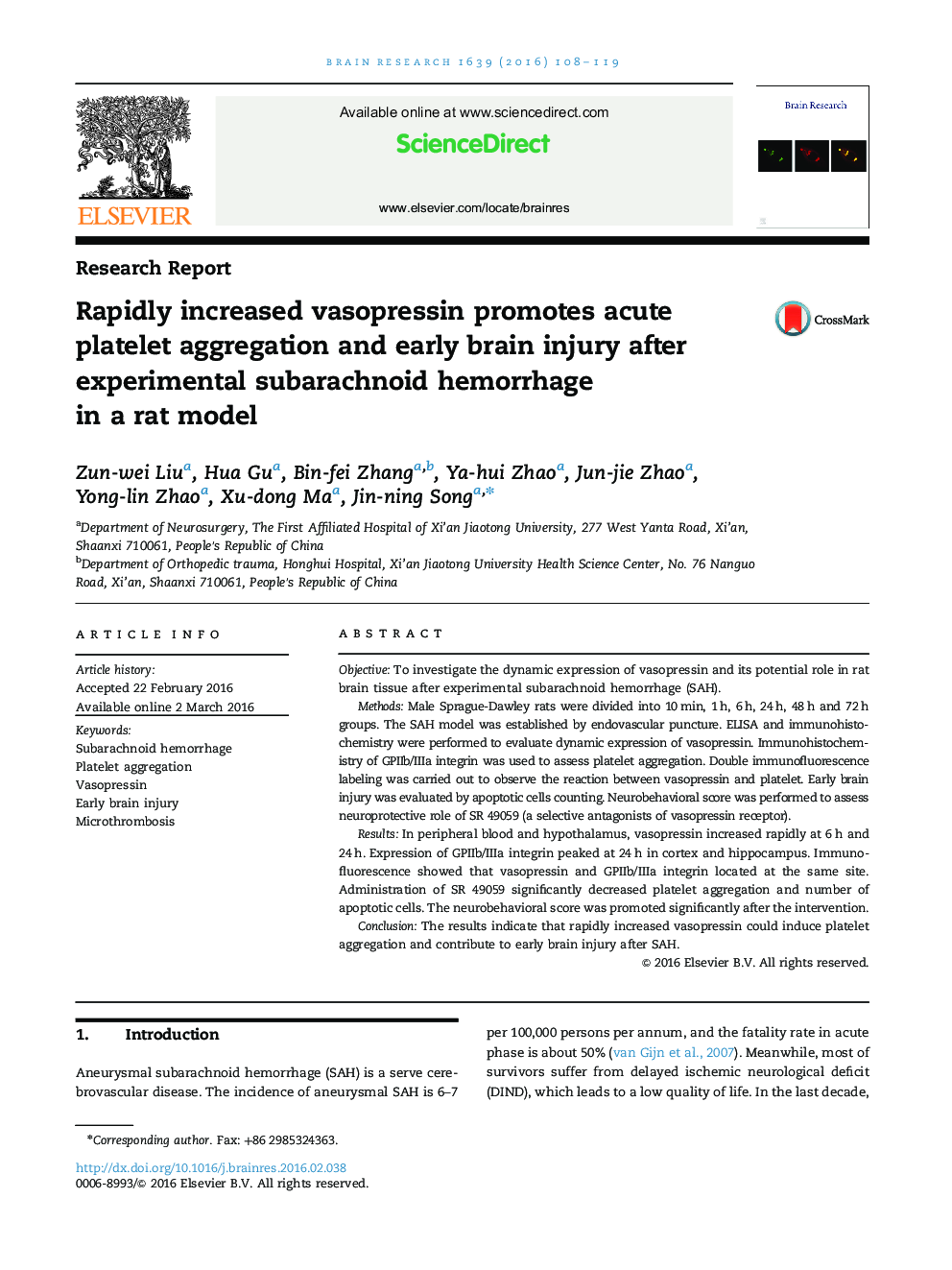| Article ID | Journal | Published Year | Pages | File Type |
|---|---|---|---|---|
| 6262582 | Brain Research | 2016 | 12 Pages |
â¢We investigated expression of vasopressin in subarachnoid hemorrhage model.â¢The study indicates that vasopressin may contribute to platelet aggregation.â¢The combination of vasopressin and V1a receptor may promote platelet aggregation.â¢V1a receptor antagonists could inhibit platelet aggregation.â¢V1a receptor antagonists extenuated apoptosis and promoted neurobehavioral scores.
Objective: To investigate the dynamic expression of vasopressin and its potential role in rat brain tissue after experimental subarachnoid hemorrhage (SAH).Methods: Male Sprague-Dawley rats were divided into 10Â min, 1Â h, 6Â h, 24Â h, 48Â h and 72Â h groups. The SAH model was established by endovascular puncture. ELISA and immunohistochemistry were performed to evaluate dynamic expression of vasopressin. Immunohistochemistry of GPIIb/IIIa integrin was used to assess platelet aggregation. Double immunofluorescence labeling was carried out to observe the reaction between vasopressin and platelet. Early brain injury was evaluated by apoptotic cells counting. Neurobehavioral score was performed to assess neuroprotective role of SR 49059 (a selective antagonists of vasopressin receptor).Results: In peripheral blood and hypothalamus, vasopressin increased rapidly at 6Â h and 24Â h. Expression of GPIIb/IIIa integrin peaked at 24Â h in cortex and hippocampus. Immunofluorescence showed that vasopressin and GPIIb/IIIa integrin located at the same site. Administration of SR 49059 significantly decreased platelet aggregation and number of apoptotic cells. The neurobehavioral score was promoted significantly after the intervention.Conclusion: The results indicate that rapidly increased vasopressin could induce platelet aggregation and contribute to early brain injury after SAH.
